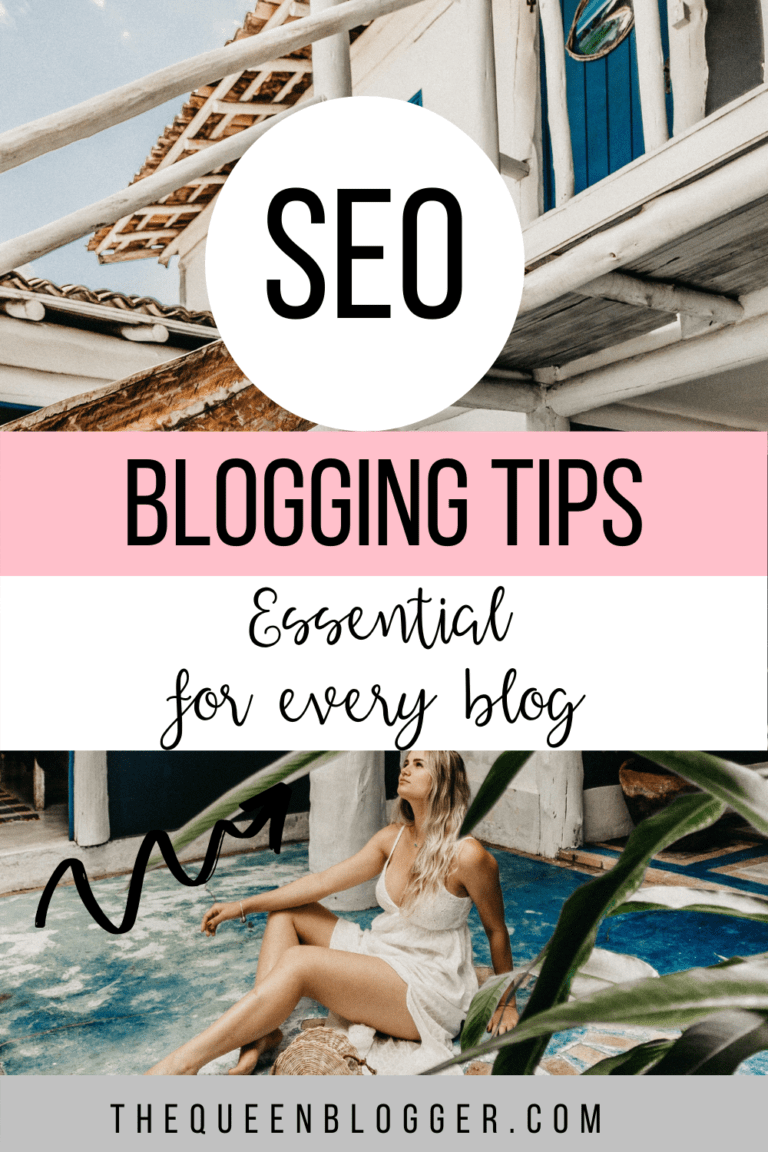Imagine a business that promises a regular income from the comfort of your home. If you think this is just a fantasy tale then sadly you are a part of the 85% who failed to make money from their blog.
People love blogging, they cherish the opportunity to educate, help, and inspire others. I agree that the chance to serve people is its own reward. You then move on to serve an even larger population if the blog becomes an income-generating business.
Although blog monetization is one of the top trending topics with scores of books and courses online, only a small fraction make money. To be one of the handfuls of people to run a blog business you need a solid blog plan.
A blog plan helps you set clear goals, understand your audience and competition, keep you on the right track, and help you tactfully navigate through obstacles to run a successful and profitable blog business.
Sounds too hard to create? Not at all.
Together, we’re going to take an exciting journey where I’m going to show you the 7 steps to create a blog plan which will bring you six figures in not so distant future.
Step 1: Begin With an Executive Summary

You might think the phrase ‘Executive Summary’ is too corporate-like for your blog. In reality, it’s the fulcrum that supports the whole blog plan.
It focuses on what’s important to you, highlights your current position, lists your monetization methods, and presents you with a target or goals to achieve. An executive summary is an essential and indispensable part of your blog business plan.
The important components of an executive summary:
Mission Statement: It sums up the objectives, strategy, and values of your business in just a few words. Clearly and succinctly, the statement describes what makes your business unique and your goals, plans, and hopes for the future.
The Status Quo: If you’re already running a blog, then you know the progress it has made so far. I’m not just talking about money. It can be anything relevant to the growth of your blog.
You can note down the page views, unique visitors, social media performance, email subscribers, and more. This exercise of mentioning your current state of affairs in your blog plan will help you set realistic goals for the future.
Your Offering: We’ll see a lot more of this in the later sections of the blog plan. But, write a few lines about the product or services you’re offering that deliver value to your audience. Here, you can also mention the monetization streams you plan to use to sell the products or services.
Goals: There is no blog business plan without a goal. Without goals, you’re walking on a path to nowhere. In this section, you need to mention your long-term goal.
- Where do you see the blog in 3 or 5 years?
- What do you want your blog business to achieve in that period?
Step 2: Describe Your Blog; Its Culture and Personality in the Blog Plan
Your blog is a brand and every brand has certain values and a unique personality. These brand values (or brand culture) govern every expression of your business and every experience of your target audience. Your blog’s brand culture and personality normally depend on the following elements:
Uniqueness: What sets you apart? Why should the audience flock to your blog instead of other websites in the same niche? To create your company culture that leads to success, you need to have a thorough understanding of your competition, their culture, what they stand for, and their offer to the audience.
Psychology of Your Audience: Your blog’s culture must match with the values, beliefs, and needs of your audience. We see this all around us, a large number of individuals come together to form communities because they share certain common ideas, values, and beliefs. So, in your blog plan, define your brand culture and make sure it matches with people you intend to serve.
Brand Personality: A blog without personality is a dish without salt – a recipe for disaster. Emotion and personality breathe life into words that populate your blog. Your blog personality depends on what you want the blog visitors to feel (the emotions that are generated) when they interact with the content.
Business Structure: You might be a solopreneur now, but in the future, when your blog becomes a successful brand, you may want to become a limited company or any type of legal entity.
When you become a Limited Liability Company (LLC) there’ll be more employers and clients to deal with. A clear business structure of an LLC will help you deal with the people around you and safeguard your income and business from any unwanted legal action.
Step 3: Do a Complete Analysis of Your Competition

We start this section with a caveat. Learn from your competitors, but don’t copy them.
To stay ahead of the competition, you need to know the strengths, weaknesses, approaches, and strategies. In addition, if some of them are already making money and attracting scores of viewers, don’t be intimidated or even let down.
Part of the thrill of running a blog is the challenge ahead of you. With a solid blog plan and plenty of hard work, you’ll overtake your competition soon.
Now, let’s get back to competitor analysis. Here is what you need to do:
Identify the Competition: Look for blogs that are part of your niche. Filter the list to choose only those that offer the same product or service as you do. Also, include those websites that rank for the main keywords that you use or plan to use.
You can use various third-party applications to compile the competitor list. There are other possible avenues of research including searching social media platforms, joining Facebook groups, and searching Google with relevant keywords.
Learn Your Competitor’s Goals: Now we get into the really exciting part. With a fine-tooth comb go through the blogs and social media pages of your competition. Ascertain the goals and strategies of the competition and add them to your blog plan.
Find answers to the following questions:
- What are they offering (content, products, or services)?
- How are they promoting the products or services?
- What are the common strategies they use to attract the audience (free guides, live webinars, etc.)?
- What’s their USP (Unique Selling Point)? How are they distinguishing themselves from others in their niche?
Don’t make competitor analysis a one-time exercise. Analysis of your competition’s progress for an extended period might reveal their short and long-term goals.
Review Strengths and Weaknesses: By now you’ll have a fair idea of what you’re up against. You’ll know the top competitors, their offerings, goals, and strategies. Don’t forget, the blog plan is a document that lays down a pathway for your success. It must feature a section on the strengths and weaknesses of your competition. You can use the findings to chart your strategies and avoid mistakes they make.
Step 4: Research and Define Your Audience
As much as we both want every internet user to be your target audience, it’s not going to happen. You’ll only waste money and effort if you consider everybody as your target market.
Your target audience is a group of people with certain common characteristics who are most interested in your offering and likely to spend for your product or service.
Demographics and Audience Persona: A clear definition of the target audience will help you spend less and earn more with tailored offerings, messages, and strategies. In a blog plan, the target audience is defined with the help of demographics and audience persona. Researching your audience will reveal the following:
- The age and location(s) of the audience
- The pain points or needs of the audience (in other words, what makes them visit your blog?)
- Their interests, hobbies, and aspirations
- The values they hold dear to their heart
- Education and income of the audience (if these apply)
Research Methods: The blog plan should list the research methods that’ll help you arrive at the audience demographics and buyer persona. A survey is a tried-and-tested technique that has worked for businesses for a long time.
Create a survey with precise questions that’ll elicit clear and useful answers from people. Survey tools such as Typeform and SurveyMonkey will help you distribute the questionnaire. An alternative method is to search Facebook, Instagram, and other social media platforms to learn about your audience.
Offering a Solution: People visit blogs for a reason – to find answers. Hence, in your blog plan, it’s vital to include how you plan to help your target audience. The answer to this question could very well decide the type of products or services you intend to offer.
Bear in mind your competition is providing the same service. So, you need to find ways and strategies to better their performance to stand a chance at attracting more visitors.
Step 5: Grow and Nurture Your Audience and Community

You need a steady stream of visitors to monetize your blog. For beginners, the biggest challenge is to build a community of people. They are not just one-time visitors; they are people interested in your product or service with the best chance of conversion into leads and sales.
To build a community, you need to nurture the audience, and the following channels give you the best chance to do so:
Social Media Platforms: Without a doubt, social media marketing must feature in your blog plan. Social media has a close relationship with blogging because it helps grow and nurture an audience. You meet new people, engage with your audience, and build trust which might develop not only into sales but a long-term relationship.
The options you have are aplenty; Facebook, Instagram, Pinterest, and Twitter, are just a few available for you. Before you go all out, you need a clear idea about where and how to invest resources.
Note down the answers to the following questions in the blog plan:
- What research strategies to use to find your target audience on the platforms?
- Which social media platform hosts your target audience?
- Which platform requires your special attention?
- What are your marketing and engagement strategies for each social platform to grow and nurture your community?
Email: Email marketing will never go out of fashion. Focus on growing your email list. It will help you create brand awareness, generate leads, and build a blog community. A solid approach will increase your chances of success, so the blog plan must also include the following sections:
- Strategies and tools to grow the email list
- The lead magnet that’ll induce your target audience to take action
- Content calendar to ensure you stay in constant touch with the audience
Find a Voice for Your Blog: This is an extension of our discussion about personality. For the audience to truly connect and engage with your blog, maintain a consistent tone and style. You need to establish a consistent voice to make people feel they are dealing with a person.
Step 6: Decide Your Income Streams
Finally, we’re to discuss a point that’s at the core of the blog plan – strategies to monetize the blog. Although the list is long our focus is on income streams that are most likely to succeed. In this list, you’ll find selling products, providing a service, sponsorship, affiliate income, and advertising.
Income Stream determines the Content: What you include in the blog depends on the income stream of your choice? For example, in affiliate income, you earn a small commission whenever your audience buys a product you’re promoting. The content in the blog will revolve around the product, its features, benefits, pros and cons, functions, and more.
In contrast, advertising is a passive income stream that has nothing to do with the content. You don’t use the content to sell anything. That said make sure the content you use is what the audience needs and wants. In addition, deal with the following specific questions in the blog plan:
- How many products are on sale?
- How much do you plan to sell your service for?
- What are the content types you plan to use?
- What are the different plans or packages you’re offering?
- What are the guidelines to publish sponsored posts in your blog?
Serving Your Audience: While monetization is an important part of the blog plan, the decisions you take on the income stream must ultimately help you serve your audience better. In fact, every decision you take, including the products sold, service offered, content created, etc. must be something that solves the problems your audience is facing.
Value-Added Content: You need to do some serious thinking before filling this section in the blog plan. To overtake your competitors, use exclusive and unique content that the audience can’t get anywhere else. Value-added content can take the form of promotional offers, free shipping, case studies, webinars, etc.
Step 7: Develop a Marketing Strategy for Your Blog

As we reach the end of this blog post, I remember a line too often heard years ago: The harder you work now, the more rewarding your future will be.
Even the best content, products, or services will yield little income if your target audience is unaware of their existence. Marketing is very complex with its many goals, marketing channels, content types, KPIs, tracking, and more.
You need to develop a clear framework to deal with the many rules, tools, and strategies of marketing. When it’s finished, the marketing plan will be a detailed document that’ll add considerable heft to your blog plan.
Marketing Channels: Make a list of all the marketing channels you plan to use. This will include Google (organic and paid) marketing, social media, email marketing, live webinars, YouTube video marketing, and more. In addition, you need to prepare a marketing plan for each of these channels and your chosen social media platforms.
Time Spent and Resources: You need to make peace with the fact that it’ll take time to monetize your blog. You need to work each day or at least 3 or 4 days a week on various aspects of the blog. Hence, give a realistic picture of the hours you can invest in the marketing and promotional process. Experts can be hired but your involvement is necessary to ensure the marketing process runs without a hitch.
Launch Strategy: Make every important milestone of the blog an event. Start with the blog launch. You can create a buzz around the launch by sending ‘Coming Soon’ email newsletters. Once your audience visits the blog don’t disappoint them with sparse content. Aim to keep them on the blog as long as possible with 5-10 blog posts and other engaging features like videos, infographics, etc.
Long-Term Plans: This is an important section if you want regular income from the blog. Work on a set of long-term strategies that’ll help the blog grow from strength to strength. It can be anything from adding a new product category every year or adding a new service to launching a YouTube channel or conducting live events regularly.
Last Words about Creating a Blog Plan
A paved road with clear directions is a lot easier to navigate.
This blog plan is a framework for you to develop and build your blog business. Along with the blog plan you need motivation, discipline, and perseverance, glimpses of which I see just by your presence in this concluding section.
Now, start drafting your blog business plan and break the shackles of the conventional 9-to-5 office life.




